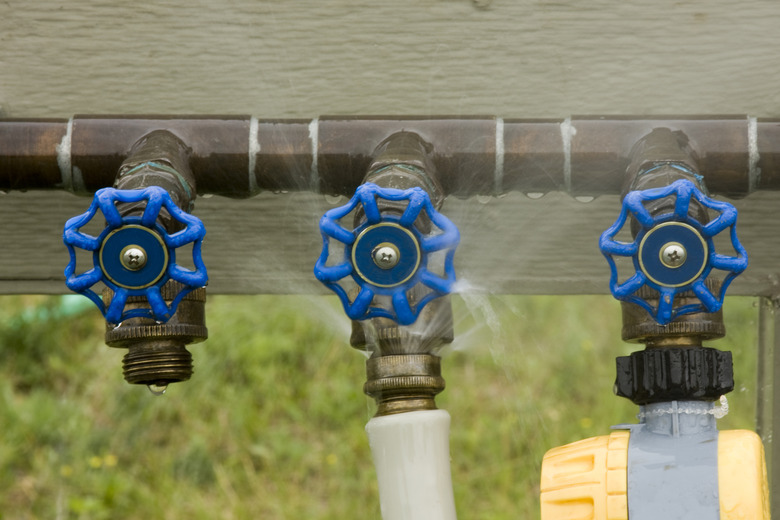How To Attach A PVC Pipe To A Hose Bib
We may receive a commission on purchases made from links.
PVC pipe isn't an ideal material for indoor water lines — where copper, PEX, and CPVC are better — but it's common to use PVC pipe to supply outdoor irrigation systems. Sometimes the most accessible water supply for outdoor irrigation is an existing water spigot, and sometimes it makes sense to install a new spigot somewhere between the house and point of use.
A spigot, which is also known as a hose bib, has standard 3/4-inch male hose threads on the outlet and either 1/2- or 3/4-inch male or female pipe threads (which are different from hose threads) on the inlet. You won't find a PVC hose bib; they are almost always made of brass, so you'll be connecting plastic pipe to metal threads. You can do this with adapters, but you need the right kind.
Establishing an Outdoor PVC Water Supply
Establishing an Outdoor PVC Water Supply
Suppose you want to install a spigot halfway between your house and a greenhouse 100 feet away so you can use the spigot for watering as well as to supply the drip system in the greenhouse. This is easy to do with PVC pipe.
You tie the PVC pipe into an existing water main in the house using an appropriate tee and adapter and run it underground to the point of use to protect it from the sun (PVC doesn't handle sun exposure very well). Stub the pipe out of the ground, attach it to a post for support, and terminate it with a 90-degree elbow to make the outlet horizontal. You're now ready to connect the spigot.
Connecting a Spigot to the Water Line
Connecting a Spigot to the Water Line
When you're connecting PVC to a metal spigot, the spigot inlet should have female pipe threads. This avoids having to use a PVC female adapter, which can crack when you tighten it onto metal threads.
To connect the spigot, screw a PVC slip adapter with male pipe threads into the spigot inlet but first, coat the threads with pipe dope or wrap plumbing tape around them. Make sure the inlet diameter of the adapter corresponds to the pipe size — either 1/2 inch or 3/4 inch.
When the fitting is tight, cut a 2- or 3-inch length of pipe of the proper size and glue it into the adapter using PVC primer and PVC cement. Now glue the other end into the elbow on the end of the supply pipe, making sure to orient the spigot outlet in the direction you want it (usually pointing at the ground).
Connecting PVC Pipe to the Spigot Outlet
Connecting PVC Pipe to the Spigot Outlet
If you want to permanently connect a PVC water line to the spigot, it's a good idea to first screw on a splitter to leave one outlet free for occasional watering. You'll need an adapter to convert the smooth end of the pipe into a threaded end so you can screw it to the spigot, but again, since you don't want to use a female adapter to connect to metal threads, you should make it a PVC male thread adapter. This gives you two male threaded ends; the one on the pipe has pipe threads, and the one on the spigot has hose threads.
Fortunately there's an adapter that lets you connect two male ends of this type. It's made of brass, and it's called a swivel adapter because the two ends rotate independently of each other. Glue the PVC adapter to the pipe, wrap plumbing tape or spread pipe dope on the threads, and tighten on the pipe-thread end of the adapter. Now all you have to do is screw the hose-thread end of the adapter onto the spigot to complete the connection.
